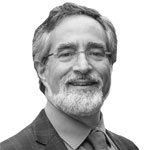A little over a year ago, I received an urgent request from parents at a District 3 elementary school to support the restoration of funding for a para-educator — partly because she does incredible work with a population that depends on her expertise, but partly because she was already struggling to stay in San Francisco with its ever escalating rents. That same year, two teachers living in rent-restricted housing came to me seeking help negotiating extensions to their affordable leases after a new investment company announced they would be tripling rents once the building’s affordable rent agreement expired. This past year on Walk to School Day, another longtime and beloved elementary school teacher pulled me aside to ask for my help: after years of living in her rent-controlled housing, she was being evicted. This is typical of much of the housing in District 3, whose neighborhoods are some of the oldest and densest in the entire city. Rental housing has continued to be gobbled up by speculative owners and flipped for massive profit. Although I’ve authored several of the strongest tenant protections San Francisco has — including reforms to owner move-in evictions and landlord pass-throughs — keeping tenants in their homes is tough when you don’t own the land.
In 2015, then-Supervisor Jane Kim put a ballot initiative before the voters that ultimately overwhelmingly passed, setting city standards for affordable housing priorities on public land. Her assertion at the time was that taxpayer-owned land should be developed by and for the people — and that the free land value should not inure to private developers for the development of market-rate housing. With limited public land to develop on, we should be recapturing value for the public good.
Last month, Supervisors Matt Haney, Sandra Lee Fewer, Shaman Walton and I put forward a ballot measure for this November’s election. Drafted in partnership with the teachers union (United Educators of SF) and affordable housing developers, the proposal’s co-sponsors (with the exception of me) are all former Board of Education presidents. The Affordable Homes for Educators & Families NOW Act would streamline the review and zoning process for 100-percent affordable housing projects, as well as create a new category of affordable housing that includes middle-income teachers. These “educator housing” projects could be dedicated for early childhood educators, para-educators, tenured teachers and SFUSD social workers, all because they’re on public land owned by the SF Unified School District, which ensures placement of educators by virtue of their employment. Same goes for City College properties — CCSF would be able to leverage its defacto “landlord” status to house CCSF faculty and staff.
Owning the land is only half of the battle; we also have to make sure that the projects are feasible by housing a wide cross-section of employees, who range in income levels from para-educators who make around 35 percent of the area median income to teachers and SFUSD administrators who might make closer to 150 percent of the area median income. Educators don’t want to compete with each other for limited housing, and public school land should be prioritized citywide in every district for the maximum amount of affordable units that we can build to keep our teachers and principals serving the children they love. Because 100-percent affordable housing projects developed by nonprofits on city land only serve residents making up to 120 percent of the area median income (and are eligible to anyone who meets those income requirements, not just teachers), we have worked with affordable housing developers and educators to craft a proposal to target the widest possible group of educators, without making the units market-rate. These are real people, and their displacement has real impacts on our neighborhoods.
All of this will also take a little more investment on the city side to fully realize educator housing. For the first time in the city’s history, the Board of Supervisors has dedicated $20 million to affordable educator housing in the $600 million affordable housing bond that will be before voters in November. We have also invested in a new category for senior housing because both of these groups require additional public subsidy to pencil, for different reasons.
The first step is to maximize our public land for the public good, as the voters mandated through Proposition K, which means prioritizing deeply affordable housing. Streamlining of project review and expedited rezoning of these public lands to allow housing is next, and investing in the first-ever educator housing fund is the third key to this plan. The Affordable Homes for Educators & Families NOW Act will help to create a new low- and middle-income program that can always be tweaked later at the Board of Supervisors, if SFUSD and CCSF find that there are changes that will benefit this evolving pilot program. That’s the flexibility of an initiative ordinance that understands policy should be a living document reflecting the changing landscape of our city. The Board of Supervisors is committed to continuing this work in partnership with those who should be at the center of this policy-making: our teachers and our affordable housers.
Be on the lookout for more updates in the days to come and have a wonderful summer!
See you in the neighborhood,
Aaron






